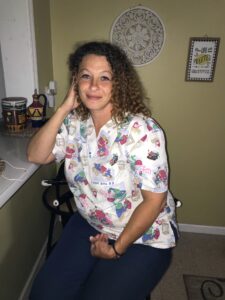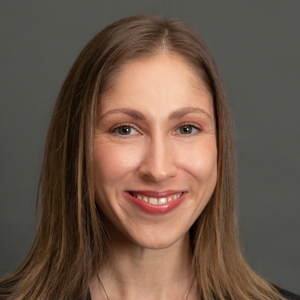In the Words of Direct Care Workers: Crystal Proffitt
To commemorate National Nursing Assistants Week, which takes place June 18-25, we spoke with Crystal Proffitt, a Certified Nursing Assistant (CNA) and Certified Hospice Palliative Nursing Assistant (CHPNA) at Transitions LifeCare in Raleigh, NC. She discussed her experiences as a direct care worker for 17 years and how she’s navigating the COVID-19 crisis.
On why she decided to become a CNA
“I started out in this field as a Personal Care Aide (PCA) when my two kids were very young, and then became a Certified Nursing Assistant (CNA) in 2009. I raised both my kids by myself, and becoming a CNA helped me provide for them while also giving me a work schedule that has allowed me to be around for them too. Then, after losing a very close friend who went on hospice and died without having anyone around him, I decided I really wanted to make a difference for people who were at the very end of their lives. So, I decided to go into hospice care.
I’ve always thought of myself as a caretaker, and I knew from a young age that I wanted a profession that involves providing for older people. My grandfather was like a dad to me growing up, and I spent a lot of time with him, helping him out with whatever I could, and I did the same for other older people who lived on my street. Even at age four or five, I would stop by neighbors’ homes and ask them if I could help out with little jobs. As a community, I feel that we have a responsibility to take care of our older people. They are the reason why we are here.”
 On her relationship with her clients
On her relationship with her clients
“I understand that many people think of a CNA, especially someone working in hospice, as somebody who just goes in and maybe gives a patient a bath or shower. But for me, being a CNA is much more of a nurturing and giving role. My focus is less on a patient’s diagnosis and more on getting to know them as a person, and figuring out how I can make their day the best one possible while providing the care they require in the care plan. I also report any signs of declining health to the nurses. I love my patients with all that I have, but I prepare myself to let go when their time comes because that’s just the nature of my job.
I have a lot of patients who are resistant to my help at first, or who would rather not have someone come into their homes. I do my best to build relationships, and I start by thanking them for allowing me to come in and help them. I understand everybody moves differently and everybody hurts differently, and I try to be very compassionate in my care. I try to always remember that my patients are somebody’s mother, father, brother, sister, or grandmother. We’re all going to need help one day, so I want to provide support for not only the patients but their families as well.”
A CNA whose compassion for older adults has inspired her to provide end-of-life care, Crystal’s role as an essential worker during the coronavirus pandemic requires her to take multiple precautions to protect her clients, her family, and herself.
On the impact of COVID-19
“Typically, before COVID-19, I was seeing six patients a day in their homes or in facility settings. Now, to protect everyone from infection, CNAs aren’t seeing as many patients, and I may only see two or three a day. With this decline in patient care, Transitions LifeCare also has CNAs helping with its food pantry for vulnerable patients affected by COVID-19. I am very active with the food pantry, and I’m also keeping busy delivering PPE supplies within our community and helping nurses run COVID-19 tests to the lab for newly admitted patients. This other work has allowed me to maintain similar working hours even though I have fewer patients right now.
Transitions LifeCare has done a great job communicating with us during the pandemic. They constantly give us updates on COVID-19 and provide us with ongoing trainings and guidance on how to prevent infection and how to monitor ourselves and screen patients for symptoms. Our patients and their family members are required to wear face masks during our visits, and we, of course, wear our PPE. We have to make sure that we are always doing infection control outside of work because we are not only protecting ourselves, we’re protecting our patients that have compromised health and are generally homebound. So that means wearing face shields or masks and goggles, washing my hands when I get to a patient’s home, washing my hands when I leave, and using hand sanitizer when I get to my car. Then when I get home after work, I need to make sure I’m also taking all the precautions to avoid putting my family at risk. I immediately wash my hands, remove my clothes and put them straight into the washing machine, and take a shower.”
On self-care during COVID-19
“I was extremely stressed about COVID-19 at first, and I was so worried about putting myself at risk at my job and about protecting my kids. I would think, ‘What if something happens to my children? Or what if I get it, how will I quarantine from them?’ I found myself worrying all day, and then I decided that I really couldn’t allow this to consume me because I had to keep going to work and keep providing for my patients. Instead of worrying myself sick, I just try to keep doing everything I can to protect myself and keep reminding my kids and my patients about the importance of taking care of themselves, too.”






